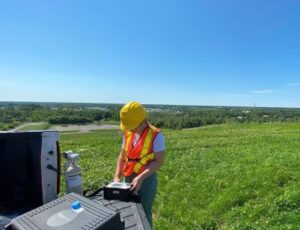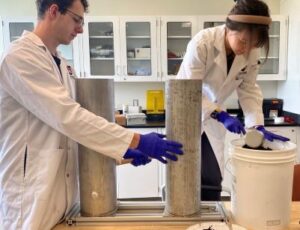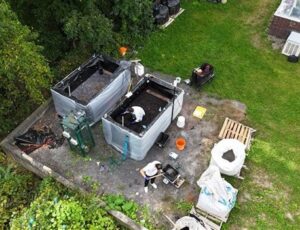Environmental Engineering in the Critical Zone
OUR RESEARCH INTERESTS
- Contaminant hydrogeology
- Geo-environmental engineering
- Groundwater, soil gas, and gas flux monitoring
- Environmental sensors
- Multiphase flow in porous media
- Multicomponent mass transfer

OUR WORK
The Van De Ven Research group studies physical, chemical, and biological processes controlling the fate of gases and other contaminants in the saturated and unsaturated subsurface. A current focus of the group is investigating the transport of geo-environmental greenhouse gases (GHGs) within the shallow subsurface and connection with the atmosphere. High-resolution, laboratory and field experimentation allow for empirical interpretation and numerical modeling of multiphase and multicomponent subsurface processes. The group specializes in the use of intermediate-scale (10s of centimeters to meters) physical laboratory models and visual techniques coupled with advanced analytical approaches. Applications of this work include energy development, carbon sequestration, energy storage (natural gas and hydrogen), industrial contamination, waste storage, and permafrost thaw. Overall, the group seeks to develop sound monitoring techniques and engineering solutions to reduce environmental impacts to groundwater, soils, and the atmosphere.
OUR MOTIVIATION
The critical zone, spanning from the earth’s surface to the bottom of aquifers provides freshwater resources, supports agriculture, and regulates many natural processes. However, human activity including energy development and storage, industrial processes, infrastructure development, and waste storage threaten the condition of the critical zone. As a result, significant effort is required to understand, quantify, monitor, and reduce the impacts of human activity on the shallow subsurface environment.



